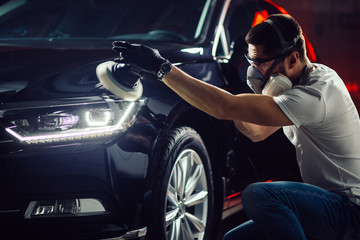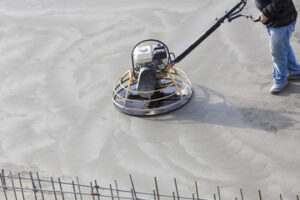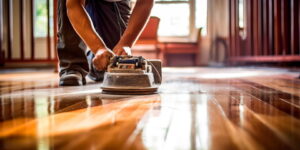
Car Detailing is a process that goes far beyond washing your car. Using high-quality tools and supplies, professionals clean every inch of your vehicle’s exterior and interior, protecting the surfaces from damage.
Even a new car can benefit from detailing. Getting rid of swirl marks and correcting the paintwork will make it look better than it did at the dealership. Visit https://ww.kolbysmobiledetailing.com/ to learn more.
1. Protects Your Car’s Paint
It may seem like a small detail, but washing your car regularly helps to keep it looking new. This is a crucial part of detailing, as it prevents dirt and stains from damaging the paint. It also keeps the vehicle’s engine, tires, and wheels cleaner. Regular cleaning can help to protect the environment, and it can also save you money by preventing a need for costly replacements.
Detailing goes beyond simple washing, and it’s important to use specialized equipment to remove contaminants from the surface of your vehicle. The cleaning process includes polishing and waxing, which adds a protective layer against scratches and other damages. It’s important to apply a quality wax for the best results, and a professional will know what products are best for your vehicle.
A detailed exterior will also be protected against UV rays, acid rain, and other environmental factors that can damage your vehicle’s paint. A detailed tire and wheel treatment is particularly important, as it will prevent the build-up of corrosive brake dust, which can cause your tires to deflate.
Getting your vehicle detailed on a regular basis can also help to preserve its resale value. A clean, attractive appearance will attract potential buyers and can help to ensure that you get a good price when it comes time to sell.
In addition to a regular wash and wax, you can also protect your car’s paint by using a spray protection solution. This will protect your car from minor dents, harmful chemicals, natural toxins, and UV rays. This is an excellent option if you plan to keep your vehicle for a long time, and it can help to protect the investment you’ve made in your vehicle.
2. Enhances the Appearance
Car Detailing, also known as car valeting in the UK, is a professional cleaning process that improves the condition of the interior and exterior surfaces to prevent deterioration. It involves a deep clean and can involve enhancement processes like paint correction. The results are showroom-like.
During the detailing process, professionals use a wide range of products and techniques that depend on the surface type and condition or the customer’s or detailer’s preferences. These may include acid-free degreasers, chemical sprays to remove tar and iron fallout, detail clay to remove microscopic imbedded contaminants, waxes and silicone and non-silicone dressings for the plastic trim and tires.
Even if you have a new car, regular detailing can improve the appearance and make it look like it’s brand-new. This will improve the resale value and attract buyers.
Over time, a car’s looks can be marred by environmental factors such as UV rays and acid rain. In addition, scratches and blemishes can spoil the finish. Detailing protects the paint by providing a protective layer against these elements. For example, applying a high-quality wax can shield the paint from UV rays, preventing fading and oxidation. The same applies for other protective coatings used during the process.
It’s important for professional detailers to maintain their skills through continued education and training. In addition, they need to stay up-to-date with new products, materials and regulations. The best way to do this is by joining industry associations or attending workshops and courses aimed at enhancing their skills. Many professional detailers also use a business platform to manage their packages, pricing, estimates and invoices. A popular choice is Mobile Tech RX, which helps detailing professionals set up a detailed and professional website, create branded estimates and invoices, and handle bookings, payment processing, accounting, and marketing.
3. Prevents Damage
The paint on your car is constantly exposed to environmental conditions, from the scorching summer sun in North Dakota and Minnesota to icy winter roads. Over time, these conditions can cause the paint to fade and oxidize. Regular detailing helps to protect the paint, reducing the chance of scratches and other damage. Professional detailers use high-quality waxes and sealants to create a protective barrier against dirt, water, and contaminants. Some detailers also offer premium products like ceramic coating and PPF (paint protection film), which provide additional protection against rock chips, small scratches, etching, mineral deposits, acid rain, and UV light.
Detailing also helps to protect the interior of your vehicle, extending the lifespan of upholstery, leather, and plastics. Interior detailing includes cleaning and conditioning fabric seats and dashboards, removing stubborn stains, and treating leather surfaces with stain repellents. It can even include odor removal with ozone treatment, leaving your car smelling fresh and clean.
Another way detailing helps prevent damage is by detecting issues before they become serious problems. Scratches, dents, and rust left untreated can cost thousands in repairs down the road. Regular detailing allows professionals to quickly identify and address these issues, preventing them from becoming worse.
A well-maintained exterior and interior can help you get a better resale value when it’s time to sell your car. Potential buyers will be more interested in a vehicle that looks and smells new. A detailed car is also more likely to run smoothly and be safe to drive, especially if the tires have been properly maintained. This makes it more likely you’ll be able to find a buyer and get the most out of your investment.
4. Makes Driving a Pleasure
Many people find that driving a car that looks and feels like new is much more enjoyable. It’s the little things that make a difference, such as the fresh smell of clean upholstery and the smooth feel of a freshly-polished dashboard. Regular detailing makes your vehicle a pleasure to be in, and it shows that you’re a conscientious driver who cares about your vehicle and takes good care of it.
It’s also worth noting that a clean, well-maintained car can be worth more at the time of sale. Whether you’re planning to sell your current vehicle or looking forward to purchasing a new one in the future, investing in car detailing is a smart move that will pay off.
The process of car detailing goes far beyond washing a vehicle. It involves a more thorough and careful clean, protection stages to preserve the finish, and enhancement processes such as paint correction. It’s a comprehensive package that will keep your vehicle in top condition and make it look almost brand-new.
As a detailer, you should set your prices according to the complexity of the job and how long it will take to complete. It’s also a good idea to use a business platform that will help you stay organized, make better decisions, and grow your business. For example, a mobile estimating and invoicing app will give you the ability to create perfect estimates, increase your revenue, and boost customer satisfaction. This way, you’ll be able to deliver a five-star service and build your reputation in the industry.
5. Protects Your Vehicle’s Interior
As with the exterior, your car’s interior is vulnerable to damage from environmental factors. Dust, dirt, and UV rays cause materials such as leather, vinyl, and cloth to fade and deteriorate over time. Regular detailing preserves and protects these materials, which in turn extends their lifespan.
During a full detail, we vacuum the carpets, wipe down all surfaces including the dash and door panels, clean and shampoo the upholstery, and treat leather and vinyl. We also clean the tires and wheels. Tires collect brake dust and other chemicals that can lead to sidewall cracking and rusting, so it is important to clean them regularly.
A thorough cleaning also removes odors caused by smoke, perfume, pets, and food spills. A fresh, clean interior not only makes driving more enjoyable but also helps reduce the number of allergens in your vehicle’s cabin.
Lastly, waxing and polishing adds a layer of protection to your vehicle’s paint job. This barrier helps to keep the paint looking great and prevents UV rays from damaging it. It also provides a smoother ride and protects your investment. So if you’re looking to protect your car’s appearance and enjoy an enjoyable drive, schedule a full or semi-car detail with us. It’s an easy way to give your car the look it deserves and extend its lifespan. Call today to get your free estimate. We look forward to hearing from you!

